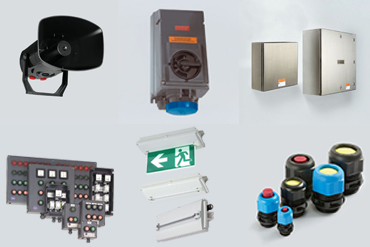Understanding Explosion-Proof products

In industrial safety, particular environments call for customized measures to effectively mitigate the risks associated with potential explosions. Explosion-proof products are essential for preventing catastrophic events. In this blog, we explore the reasons behind these clever solutions. We explore explosion-proof products, covering their construction, operation, and creative innovations that make them vital for industrial safety.
The Essence of Explosion-Proof
To truly grasp the significance of explosion-proof products, we must first understand their purpose. Explosive atmospheres, often encountered in industries dealing with flammable gases, vapors, or dust, can be lethal when ignition sources are present. Explosion-proof products are designed to contain and suppress explosions within their enclosures, ensuring that hazardous conditions are safely confined.
Intricate Engineering for Unyielding Safety
At the heart of every explosion-proof product lies meticulous engineering. From material selection to enclosure design, each aspect is meticulously crafted to withstand extreme conditions. Enclosures are constructed using robust materials that resist sparks and heat, ensuring that any potential ignition source is contained within. Venting mechanisms are strategically designed to dissipate the pressure from an explosion while preventing the escape of flames to the surrounding environment.
The Science Behind "Explosion-Proof"
While the term "explosion-proof" may sound absolute, it's essential to understand that no product can guarantee complete immunity to explosions. Instead, explosion-proof products adhere to strict industry standards, designed to prevent an internal explosion from igniting the external atmosphere. The concept revolves around the principle of "containment and cool-down." When an explosion occurs within the enclosure, its design ensures that the gases cool rapidly, limiting the possibility of igniting the surrounding hazardous atmosphere.
Compliance, Certifications and Standards
To assure the utmost safety, explosion-proof products undergo rigorous testing and certification processes. Various international standards, such as ATEX, IECEx, and UL, define the requirements that products must meet to attain explosion-proof certification. These standards encompass diverse aspects, including temperature resistance, flame propagation, and mechanical strength. Manufacturers invest significantly in research and development to ensure their products conform to these stringent guidelines.
Applications Across Industries
Explosion-proof products find applications in a wide range of industries, from oil and gas to chemical processing, mining, and beyond. Hazardous locations, such as refineries, offshore platforms, grain silos, and paint spray booths, all rely on these products to protect their personnel and equipment.
Innovation continues to drive the evolution of explosion-proof products. Advancements in materials science, venting technology, and electronics have led to more efficient and effective solutions.
Manufacturers are constantly pushing the boundaries, creating explosion-proof products that cater to unique industrial requirements.
Understanding explosion-proof products goes beyond comprehending their mechanics; it encompasses appreciating their critical role in safeguarding industrial environments against potential disasters. Meticulous engineering, adherence to standards, and a commitment to ongoing innovation characterize these ingenious solutions. As industries continue to prioritize safety, explosion-proof products remain an indispensable line of defense in the face of explosive atmospheres.
From the challenges of containment and cool-down to the broad applications across industries, these products demonstrate the power of human ingenuity in creating safer working environments. Through a deepened understanding of explosion-proof products, we pave the way for a future where industrial safety takes center stage, allowing businesses to thrive while protecting the most valuable assets: their personnel and infrastructure.
